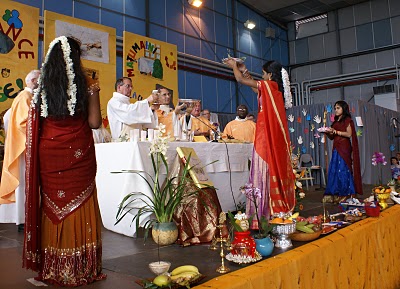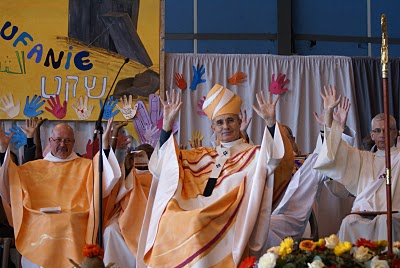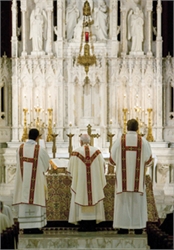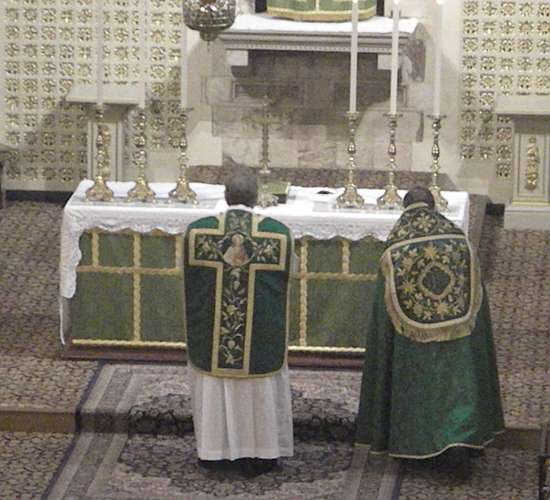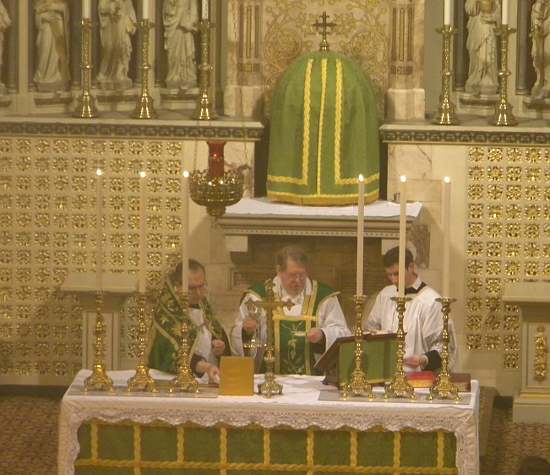En pavelig nuntius uttaler seg om messefeiring
Erkebiskop Thomas E. Gullickson er pavens nuntius på Antillene skrev i juli 2009 om hvordan han hadde begynt å feire messen ad orientem i sit eget kapell:
I am finally coming to grips with the invitation from people I respect, first and foremost from the then Cardinal Joseph Ratzinger and now Pope Benedict XVI, to look again at certain aspects of the last forty years of liturgical reform and specifically for me as a priest and bishop to look at the question of the best stance for the priest when praying the Eucharistic Prayer at Mass. …
I really am convinced that praying the Eucharistic Prayer ad Orientem makes more sense and is therefore better. I will celebrate that way in my chapel. In other chapels and churches, when I am invited, I will celebrate as is the custom there. Remember, the Holy Father has decided to teach by example in this case. …
Sist søndag holdt samme erkebiskop en preken der han bl.a. undret seg over at pave Benedikts ønsker om liturgien ikke altid blir fulgt opp:
… Why, even three years after the issuance of Summorum Pontificum (just to name one example), are well-meaning lay folk still treated with such great disdain … When the Holy Father speaks of his will to see these two forms of the Roman Rite (ordinary and extraordinary) enrich each other, when he and others express eagerness for a recovery of the sense of the sacred in our churches and in how we worship, I am convinced that he has indicated the true nature of the rupture which has indeed occurred and needs to be mended or healed. You would think that those in communion with the Pope would seek to understand him and embrace his point of view. …

